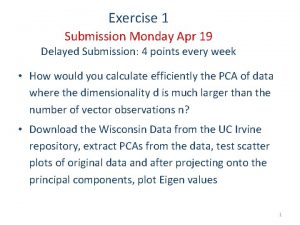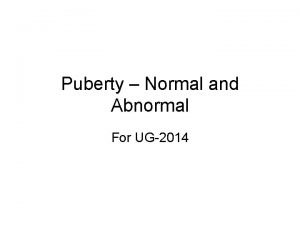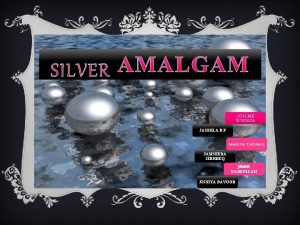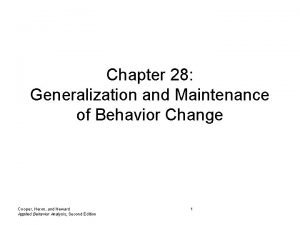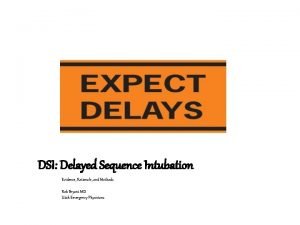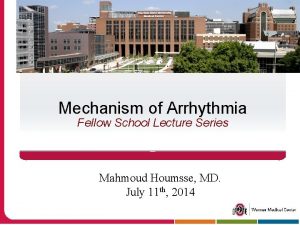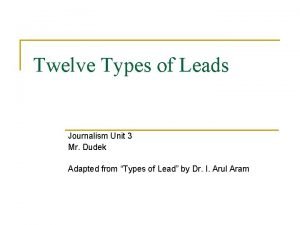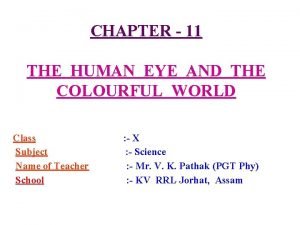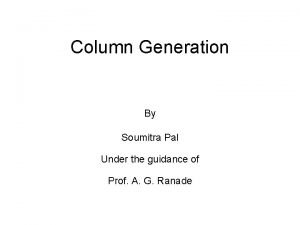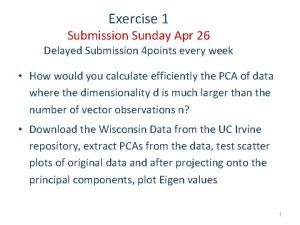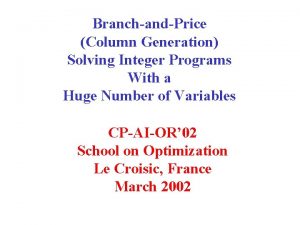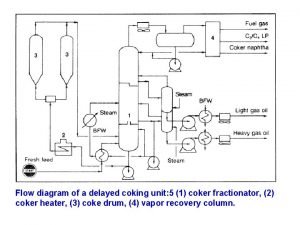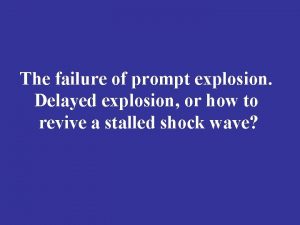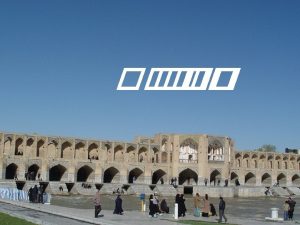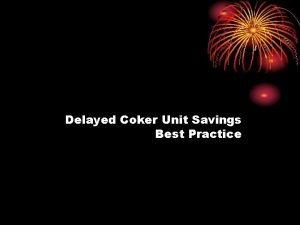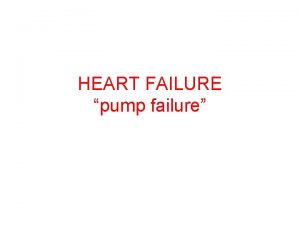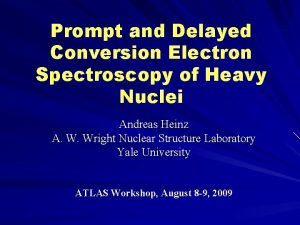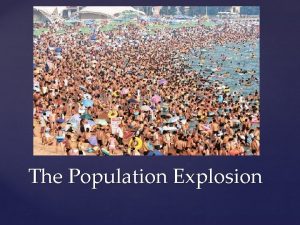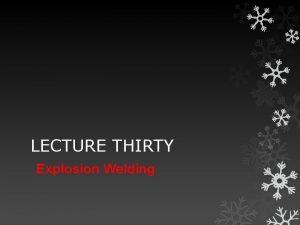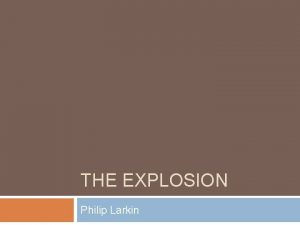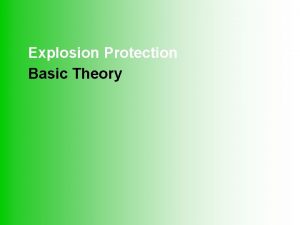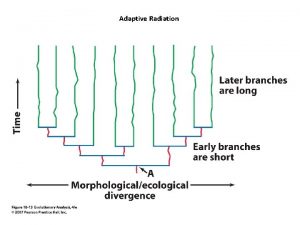The failure of prompt explosion Delayed explosion or


































- Slides: 34

The failure of prompt explosion. Delayed explosion, or how to revive a stalled shock wave?

1 -D spherically symmetric collapse let’s see the “movie” H. -T. Janka, K. Langanke, A. Marek, G. Martnez-Pinedo and B. Muller Phys. Rept. 442 (2007) 38



The properties of the Neutrino flux Cumulative neutrino “light” curve (based on Nadyozhin 1978) Nonthermal e

Liebendoerfer et al. 2003 Solid lines: 40 MSun progenetor dashed: 13 MSun progenetor

The spectral properties of the Neutrino flux Total energy radiated. Characteristic time. Neutrino individual energies (ε). Neutrino flavors.

Neutrino spectra for thermal phase Energy spectra. Fermi−Dirac law: High-energy cutoff (relevant to ):

Core-collapse SNe (all other Types but Ia) The SN outburst is triggered by the gravitational collapse of the “iron” core of a mass MFe=(1. 2 2) M into a neutron star. About (10 15)% MFec 2 is radiated in the form of neutrinos and antineutrinos of all the flavors (e, , ): The explosion energy (kinetic energy of the envelope expansion): Eexp = (0. 5 2) 1051 erg it comes from the shock wave created at the boundary between a new-born neutron star and the envelope to be expelled. Rich nucleosynthesis — from neutrino-induced creation of light element in C-O and He shells through synthesis of heavy nuclides by neutron capture at the bottom of expelled envelope

Delayed explosion Wilson J R (1985) Numerical Astrophysics (Boston: Jones and Barlett)

The mechanism of the core-collapse SNe is still under detailed study Spherically-symmetrical collapse. An empirical theorem: Spherically-symmetrical models do not result in expulsion of an envelope; the SN outburst does not occur: the envelope falls back on the collapsed core. Corollary: One has to address to 2 - and, perhaps, 3 -dimensional models to convert the stalled accreting shock into an outgoing blast wave.

Neutrino-convective mechanism of supernova explosion

Convective instability criterion A Chemically uniform medium is convectively unstable, if > A For non-uniform media > A +

NEUTRINO-CONVECTIVE MECHANISM 150 и 300 ms after bounce Liebendoerfer (2011) Convective instability condition 10^4

Dynamics of gravitational collapse Expulsion of supernova envelope (how? ) neutrinosphere

Janka (2001)

3 -D simulations:

J. M. Blondin, A. Mezzacappa “Pulsar spins from an instability in the accretion shock of SN”

From astrophysical complexity to the simplicity of a water fountain Foglizzo et al 2018


O’Connor E, Couch S. (2015) A. Marek and H. -T. Janka

Schematic Supernova «light curves»

The failure of prompt explosion. Delayed explosion, or how to revive a stalled shock wave? SN 1987 A – the only supernova with neutrino signal detected Janka et al, Prog. Theor. Exp. Phys. (2012)

SN 1987 A – the only supernova with neutrino signal detected

SN 1987 А Image from skyandtelescope. com

Small Magellanic Cloud Milky Way Large Magellanic Cloud SN 1987 A Southern Cross 23. 02. 1987 Cerro Tollolo Inter-american Observatory, Chile

The star that exploded on February 23 in the Large Magellanic Cloud (the progenitor of supernova 1987 A) has now been identified. It was catalogued by in 1969 as an OB star of 12 th magnitude and given the designation Sanduleak-69 202. Observations at the European Southern Observatory in the mid-1970's allowed to classify it as of spectral type B 3 I, that is a very hot, supergiant star. Credit: ESO

SN 1987 A ring evolution


Signals from SN 1987 A on 23 Feb. 1987: Kamioka All three detectors saw a cluster of events at ~7: 35 UT Baksan q 330 tons liquid scint q threshold ~10 Me. V q 5 events in 9. 1 sec. q q IMB water Cerenkov 5000 tons fiducial threshold 20 Me. V 8 events in 6 seconds q q water Cerenkov 2140 tons fiducial threshold ~6 Me. V 12 events in 12. 4 sec.

Baksan Underground Scintillation Telescope 31

+4 mv Mc. Naught SN 1987 А Shelton +6 Discovery Jones +8 Mont Blanc Kamioka, IMB, Baksan Sk – 69 o 202 +10 Radio (21 cм) Shelton +12 Feb 23 Feb 24 Feb 25 0 h 2 h 52 m 7 h 36 m 9 h 22 m 15 h 54 m


Detection efficiency Kotake et al (2006)
 Response prompt vs stimulus prompt
Response prompt vs stimulus prompt Stimulus control occurs when
Stimulus control occurs when Ductile fracture
Ductile fracture Failure to sense
Failure to sense Vvi pacemaker
Vvi pacemaker Delayed submission
Delayed submission A controlled intersection has
A controlled intersection has Alternative vaccine schedule 2021
Alternative vaccine schedule 2021 Hypogonadism
Hypogonadism Pre carve and post carve burnishing
Pre carve and post carve burnishing Generalization and maintenance aba
Generalization and maintenance aba Sip early offer vs delayed offer
Sip early offer vs delayed offer Delayed sequence intubation
Delayed sequence intubation Delayed afterdepolarization
Delayed afterdepolarization Owl eyes great gatsby
Owl eyes great gatsby Delayed identification lead
Delayed identification lead Question lead in journalism
Question lead in journalism Delayed differentiation and modular design
Delayed differentiation and modular design Designs may be frozen with too many imperfections remaining
Designs may be frozen with too many imperfections remaining Advance sunrise and delayed sunset is due to
Advance sunrise and delayed sunset is due to Delayed column generation
Delayed column generation Approach to child with delayed walking
Approach to child with delayed walking Sugar-coated tablets examples
Sugar-coated tablets examples Over trituration of amalgam
Over trituration of amalgam Hygiene hypothesis
Hygiene hypothesis Delayed differentiation and modular design
Delayed differentiation and modular design Isosexual vs heterosexual
Isosexual vs heterosexual Delayed submission
Delayed submission Complication of blood transfusion
Complication of blood transfusion Delayed column generation
Delayed column generation Delayed coker unit process+flow diagram
Delayed coker unit process+flow diagram Delayed offsides hockey
Delayed offsides hockey Baseline
Baseline Delayed type hypersensitivity reactions
Delayed type hypersensitivity reactions Anecdotal lead
Anecdotal lead





